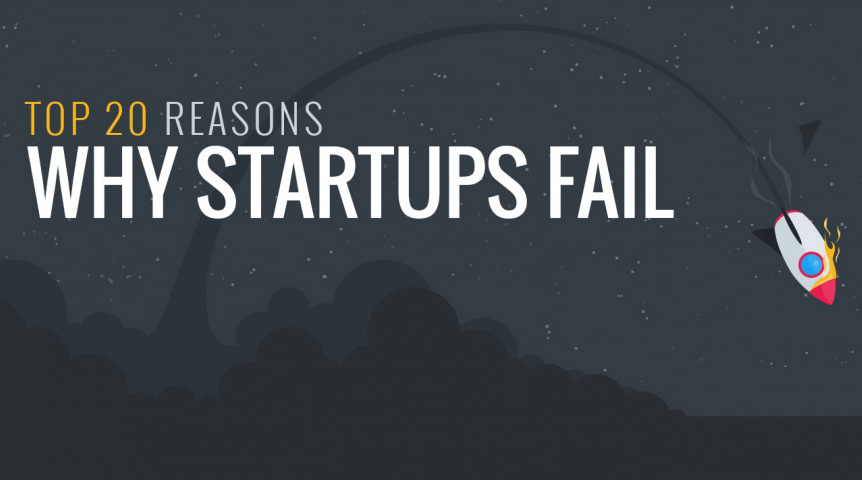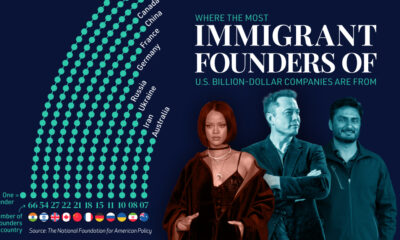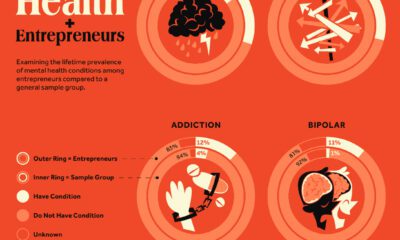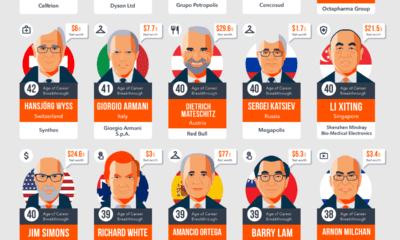Technology
Why Startups Fail: Here’s the 20 Most Common Reasons
For anyone who launches a new venture, there’s a grim reality involved: eventually 90% of startups bite the dust, and 51% of all businesses die off within a period of five years.
While failure is not fatal, there’s definitely no harm in stacking the odds in your favor in the first place. With some proper insight and critical thinking, the chance of a venture’s success can be increased by mitigating some of the most common startup risks.
That’s why it is not enough to know how many startups fail – we must know why startups fail.
CB Insights, a venture capital database, did their homework based on 101 startup post-mortems to pin down causes on why startups failed. Here’s the results in infographic form:
Why Startups Fail

The most common reason for startups to meet the grim reaper was a dreaded lack of “product/market fit”.
In other words, a startup was unable to satisfy a real market need with its product. Famed investor Marc Andreessen says that product/market fit is so important, that the lifespan of a startup can be broken up into two parts: before product/market fit, and after the fit is achieved. Once it is obtained, it’s a game-changer that increases the chance of success tremendously.
Presumably, the startups that never achieve such a fit end up in the graveyard. The analysis from CB Insights above agrees, showing 42% of startups fail because they do not solve a real market need.
The two other major reasons why startups fail include running out of cash (29%) as well as not having the right team (23%).
Inevitably, there’s no changing the fact that the vast majority of startups will meet their bitter end. That said, a better understanding of the above causes of failure may help to mitigate the risks of any new venture. And even if a startup does meet its maker, the founder may still have another shot: failed entrepreneurs often find more success the second time around.
As Winston Churchill says: “Success is not final, failure is not fatal: it is the courage to continue that counts.”
Original graphic by: Lance Surety Bond Associates
Technology
Visualizing AI Patents by Country
See which countries have been granted the most AI patents each year, from 2012 to 2022.

Visualizing AI Patents by Country
This was originally posted on our Voronoi app. Download the app for free on iOS or Android and discover incredible data-driven charts from a variety of trusted sources.
This infographic shows the number of AI-related patents granted each year from 2010 to 2022 (latest data available). These figures come from the Center for Security and Emerging Technology (CSET), accessed via Stanford University’s 2024 AI Index Report.
From this data, we can see that China first overtook the U.S. in 2013. Since then, the country has seen enormous growth in the number of AI patents granted each year.
| Year | China | EU and UK | U.S. | RoW | Global Total |
|---|---|---|---|---|---|
| 2010 | 307 | 137 | 984 | 571 | 1,999 |
| 2011 | 516 | 129 | 980 | 581 | 2,206 |
| 2012 | 926 | 112 | 950 | 660 | 2,648 |
| 2013 | 1,035 | 91 | 970 | 627 | 2,723 |
| 2014 | 1,278 | 97 | 1,078 | 667 | 3,120 |
| 2015 | 1,721 | 110 | 1,135 | 539 | 3,505 |
| 2016 | 1,621 | 128 | 1,298 | 714 | 3,761 |
| 2017 | 2,428 | 144 | 1,489 | 1,075 | 5,136 |
| 2018 | 4,741 | 155 | 1,674 | 1,574 | 8,144 |
| 2019 | 9,530 | 322 | 3,211 | 2,720 | 15,783 |
| 2020 | 13,071 | 406 | 5,441 | 4,455 | 23,373 |
| 2021 | 21,907 | 623 | 8,219 | 7,519 | 38,268 |
| 2022 | 35,315 | 1,173 | 12,077 | 13,699 | 62,264 |
In 2022, China was granted more patents than every other country combined.
While this suggests that the country is very active in researching the field of artificial intelligence, it doesn’t necessarily mean that China is the farthest in terms of capability.
Key Facts About AI Patents
According to CSET, AI patents relate to mathematical relationships and algorithms, which are considered abstract ideas under patent law. They can also have different meaning, depending on where they are filed.
In the U.S., AI patenting is concentrated amongst large companies including IBM, Microsoft, and Google. On the other hand, AI patenting in China is more distributed across government organizations, universities, and tech firms (e.g. Tencent).
In terms of focus area, China’s patents are typically related to computer vision, a field of AI that enables computers and systems to interpret visual data and inputs. Meanwhile America’s efforts are more evenly distributed across research fields.
Learn More About AI From Visual Capitalist
If you want to see more data visualizations on artificial intelligence, check out this graphic that shows which job departments will be impacted by AI the most.
-

 Markets1 week ago
Markets1 week agoU.S. Debt Interest Payments Reach $1 Trillion
-

 Business2 weeks ago
Business2 weeks agoCharted: Big Four Market Share by S&P 500 Audits
-

 Real Estate2 weeks ago
Real Estate2 weeks agoRanked: The Most Valuable Housing Markets in America
-

 Money2 weeks ago
Money2 weeks agoWhich States Have the Highest Minimum Wage in America?
-

 AI2 weeks ago
AI2 weeks agoRanked: Semiconductor Companies by Industry Revenue Share
-

 Markets2 weeks ago
Markets2 weeks agoRanked: The World’s Top Flight Routes, by Revenue
-

 Demographics2 weeks ago
Demographics2 weeks agoPopulation Projections: The World’s 6 Largest Countries in 2075
-

 Markets2 weeks ago
Markets2 weeks agoThe Top 10 States by Real GDP Growth in 2023















